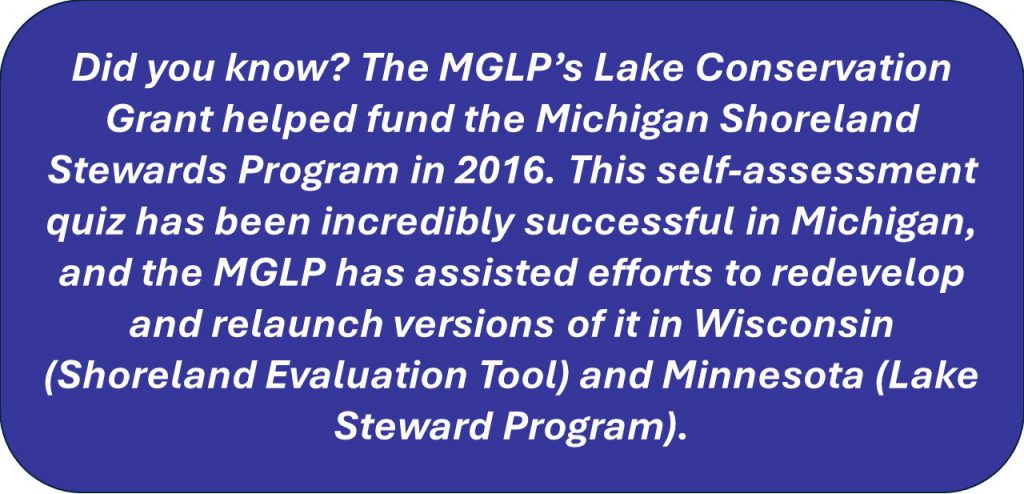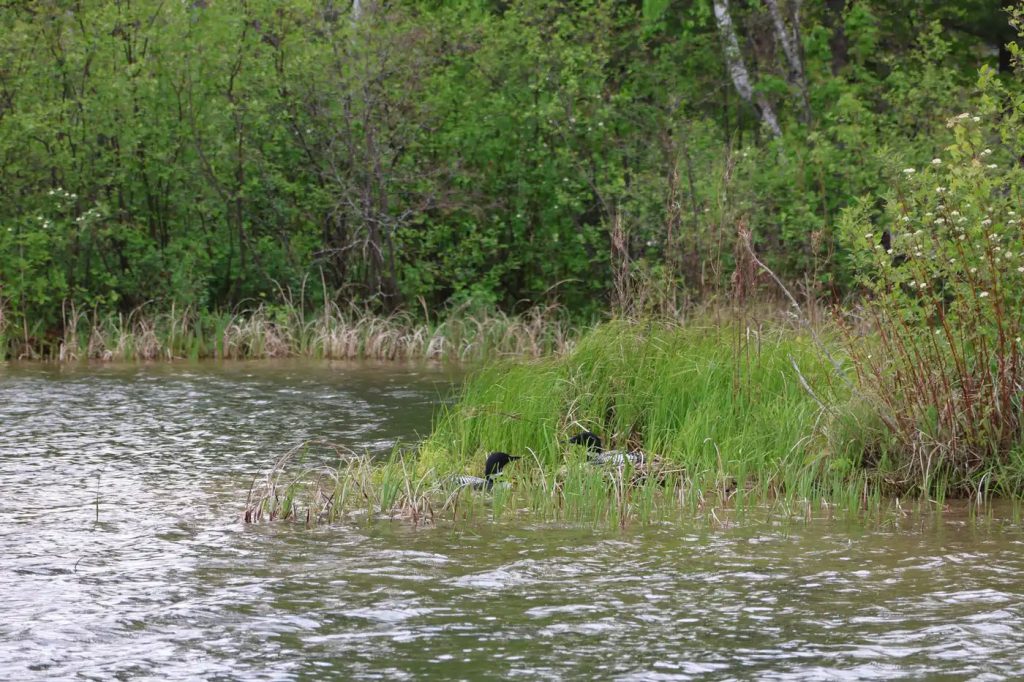From Minnesota’s agricultural South to the pine forests of its North, the state’s 10,000+ lakes are not unlike those throughout the 9-state region comprising Midwest Glacial Lakes Partnership (MGLP). A recent reporting series by Minnesota Public Radio News focused on the health of Minnesota’s lake shorelines, providing insight into the challenges of increasingly developed shorelines and insights into successful solutions moving forward. The lessons of this excellent series, “Trouble by the water: Minnesota’s vanishing natural lakeshores”, apply more broadly than Minnesota, so we encourage you to check out the whole series!
The first report, “Unchecked development, lax regulation push Minnesota lakeshores to the edge”, details trends identified in a recent Minnesota DNR report. Degradation of natural shorelines is occurring both through development of previously-natural shorelines, and more often through permits to redevelop existing properties. This redevelopment includes increases to the footprint of existing buildings, increased impervious surfaces that cause erosion, and mowed lawns that are more common in suburban landscapes. “It’s no longer just the cabin up at the lake, with your path down to your dock,” said Randall Doneen, a water resources section manager with the Minnesota Department of Natural Resources (DNR). Paul Radomski, a longtime lake ecologist with the Minnesota DNR, echoed the concern. “We are a land of 10,000 lakes,” he said. “We don’t want to be a land of 10,000 impaired lakes.”

So, what’s the solution? The second article in the series provides some answers. “Quit mowing’: Turning Minnesota lake homeowners into shoreline stewards, one lawn at a time” details the experience of Dorothy Whitmer, a lakefront property owner. Dorothy completed a survey helping her self-assess her property’s ecological effect on the lake and was surprised by her mixed results. “It could be summarized in two words: Quit mowing.” Whitmer continued, “What is good for the lakes actually saves money and effort, and it’s highly rewarding.” She used this information to encourage others on her lake and in her area to also complete the survey. When properties had a sufficiently high score, or when owners improved the ecological benefits on their properties, they received a “Minnesota Lake Steward” sign for their yard. “What that does is it signals to other people that there’s a thought behind the way the property is being managed on the lake, that there’s consideration being taken for the water quality,” said Jeff Forester, executive director of Minnesota Lakes and Rivers Advocates.

Another solution has emerged in Burnett County, Wisconsin. The third article, “In NW Wisconsin, a county finds paying homeowners to keep shorelines natural pays off”, details the county’s tax incentive program to that has preserved more than 50 miles of shoreline and helped cultivate a culture of stewardship with an investment of only $35,000 to $40,000 a year. With about 10% of lake properties enrolled and 350 of the county’s 500 lakes having at least one property enrolled, the program has been an enormous success.

The fourth article focuses on one of the key motivations for shoreline conservation in the state – loons. “On Cross Lake, loons make the case for protecting Minnesota’s wild shores” provides information as to how natural shorelines benefit loons through water quality, nesting habitat, habitat for the fishes they eat, and more.

The last article in the series details the story of one family’s efforts to address these issues on their shoreline. “Native plants, lots of patience: How a Stearns County couple restored a damaged lakeshore”, details their journey as they’ve converted a mowing-intensive landscaping to native plants, saving time to enjoy the lake and providing beautiful flowers, monarchs, and reduced erosion. The project was supported in part by the Stearns County Soil and Water Conservation District.


